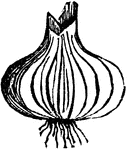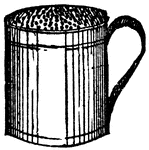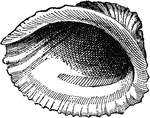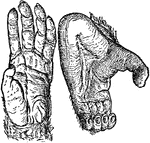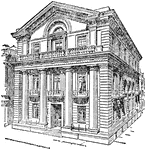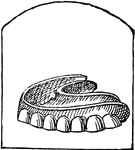
Teeth
The series of small bones attached to the jaws of animals, or human beings, which serve the purpose…
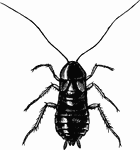
Cockroach
A common cockroach. Nocturnal in habit and are very troublsome in houses where they multiply and feed…

Bean Plant in Jar
"The bean with its roots in unboiled water will grow for a considerable time, as long as the mineral…
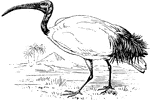
Ibis
Ibises are a group of long-legged ading birds. They all have long downcurved bills, and usually feed…
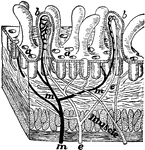
Section of Intestine wall
"A tiny block cut from the wall of the intestine showing villi and the mouths of glands at a; b, villus…

Lymph Vessels
"The lymph vessels of the body. rc, the thoracic duct; lac, the lacteals taking the lymph and fatty…
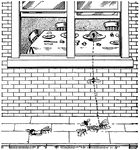
Flies outside window
"Why no one should spit on floors or sidewalks and why flies should be kept away from food." —Davison,…

Mackerel
An excellent food fish, widely distributed, and particularly abundant in the North Atlantic. It attains…

Millet
A grass extensively cultivated in some sections of the United States for forage. There are numerous…
Oats
A genus of grasses including about sixty species, valuable alike for the production of hay and for their…

Swastika Design
"Derived from the Sanscrit word Svasti, which means good pretence. It dates bck three or four thousand…

Swastika Design
"Derived from the Sanscrit word Svasti, which means good pretence. It dates bck three or four thousand…
Swastika Design
"Derived from the Sanscrit word Svasti, which means good pretence. It dates bck three or four thousand…
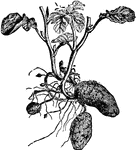
Potato
One of the most valuable food-producing plants. It is cultivated extensively in all the sub-tropical…
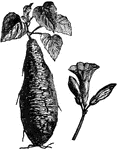
Potato
One of the most valuable food-producing plants. It is cultivated extensively in all the sub-tropical…

Rhubarb
A genus of plants cultivated for medicinal use and as a food. About twenty species have been described.
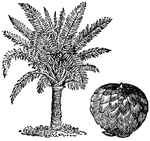
Sago
An article of food obtained from the inner portion of the bark of several species of palm trees. The…

Salmon
The common name of a class of food fishes belonging to the genus salmo. They are common to both salt…

Shad
A genus of fish of the herring family, but differing from the herrings proper in having a longer and…
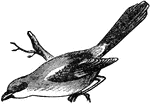
Shrike
A genus of birds of the insessorial family, and widely distributed in America, Eurasia, and other continents.…

Sucker
A genus of soft-rayed fishes of the carp family, having the mouth usually protractile, with thick and…

Pig
A genus of hoofed mammals. They include species that are highly important for food and other products,…

Teeth
The hard, bony structures situated in the mouth or near the entrance to the pharynx of vertebrates,…
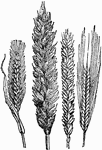
Wheat
An important and largely cultivated cereal. It is excelled by rice alone with reference to the number…

Whitefish
The name commonly applied to several species of fishes of the salmon family. They are found mostly in…

Ibis
A group of long-legged wading birds. They have long downcurved bills, and usually feed as a group, probing…
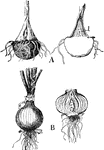
Onion
This illustration shows the shortened types of stems: A, corm of jack-in-the-pulpit. At left surface…

Greenland Whale
This illustration shows the jaw of a Greenland Whale. The Greenland Whale uses this massive jaw to filter…
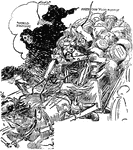
Do Your Bit
A political cartoon describing civilian answers to the new war cry. This cartoon title is "Do Your Bit."…
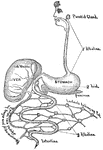
Digestive Tract
This is a diagram of the digestive tract. Notice how the food is submitted to the action of alkaline,…
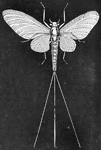
Day Fly
A May fly. So called because however long they may live in the larva state, in their perfect form they…

Sword Bearing Hummingbird
A bird with a long, skinny bill. The bill is used to probe long tubular flowers for food.

Paramecium
"Paramecium in optical section. A, anterior end; c, tilia; e.d., ectosarc; e.n., endosarc; f.v., food…
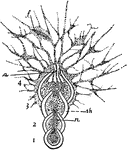
Nodosaria
"A compound foraminiferan, Nodosaria. a, aperture of shell; f, food particles captured by the strands…

Swallowing Muscles
"The circular muscle of the mouth (1) and the buccinator or trumpeter's muscle (2) help the tongue to…
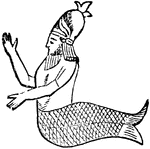
Oannes
"The name of a Babylonian god, who, in the first year of the foundation of Babylon, is said to have…
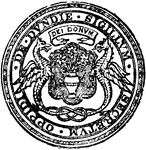
Dundee
"A royal and parliamentary burgh and seaport, situated on the east coast of Scotland, in the county…

Queenfish
It is a food fish of good quality, but too small to be of much economic importance, reaching a length…
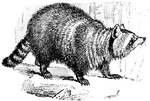
Racoon
An animal about two feet long, stout body, bushy ringed tail, short limbs, pointed ears, broad face,…
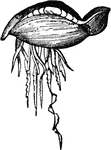
Physalia
"Physalia has no proper mouth, but the food is conveyed to the digestive cavity through a number of…
Anchovy
"A small fish, about a span long, much esteemed for its rich and peculiar flavor. It is not much longer…

Roncador
A large and valuable food fish found off the coast of California, attaining a weight of 5 to 6 pounds.…
